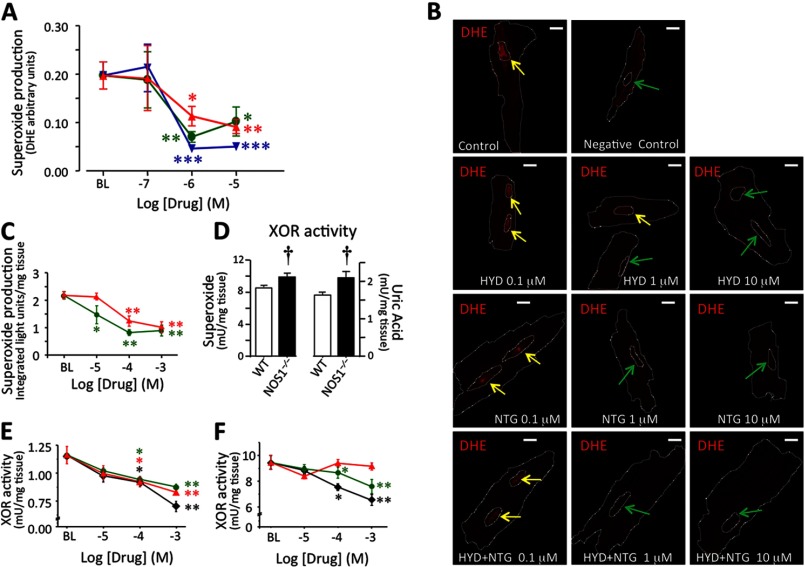FIGURE 5.
Oxidative stress is attenuated by hydralazine and nitroglycerin. A, superoxide-mediated oxidation of DHE. The ratio of fluorescence in the nucleus/cytoplasm preincubated 30 min with HYD (red ▴), NTG (green ●) and a combination of HYD + NTG (blue ▾) is shown. B, representative pictures of mice ventricular CMs stained with 3 μm DHE (superoxide-sensitive dye) in the absence (control) or presence (0.1, 1, or 10 μm) of the drugs (Bar, 10 μm). Yellow arrows indicate nuclei highly stained and green arrows show nuclei with little or no dye. C, NOX-dependent superoxide production in NOS1−/− cardiac homogenates. Effects of HYD and NTG on the NOX enzymatic system containing 0.3 mm NADPH as substrate. D, XOR activity in WT and NOS1−/− mouse hearts in terms of superoxide production (left) or uric acid generation (right). E, effect of allopurinol (♦), HYD, and NTG on XOR-dependent superoxide production in NOS1−/− cardiac homogenates. F, effects of allopurinol, HYD, and NTG on uric acid production in the XOR enzymatic system containing 0.2 mm xanthine as substrate. *, p < 0.05; **, p < 0.01; and ***, p < 0.001 versus baseline, one-way ANOVA; †, p < 0.05 versus nontreated NOS1−/−, Student's t test.

